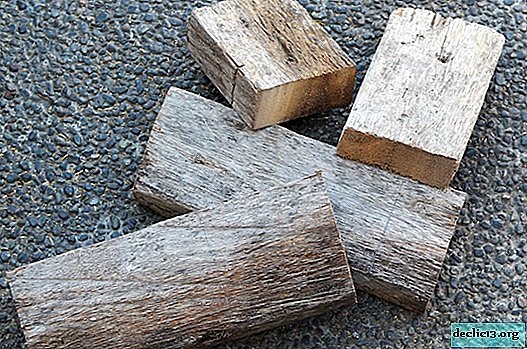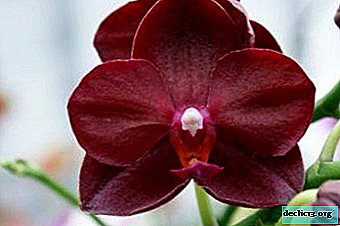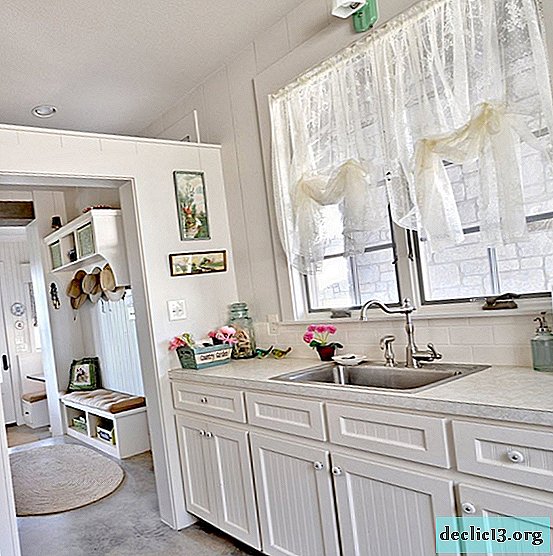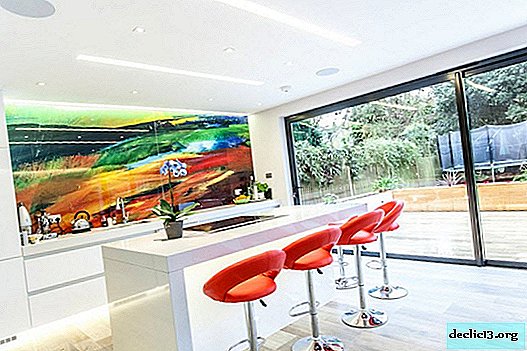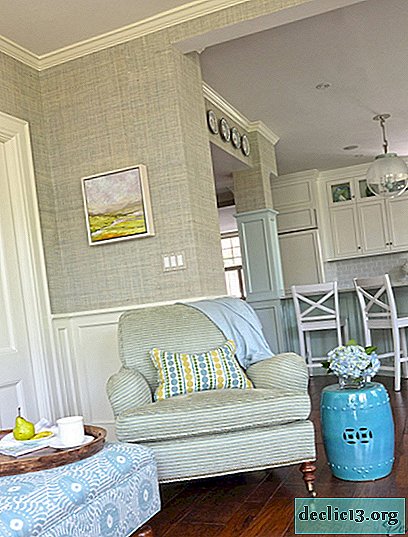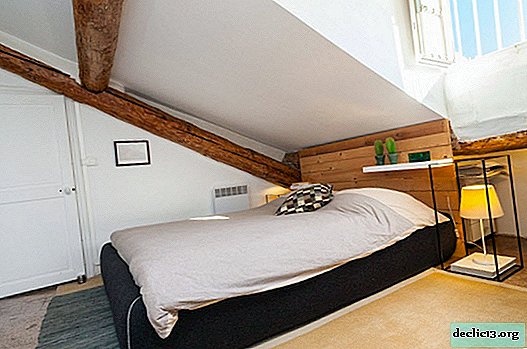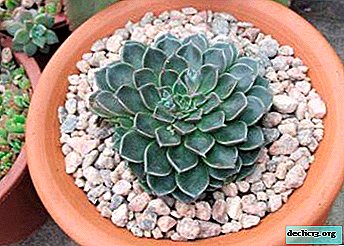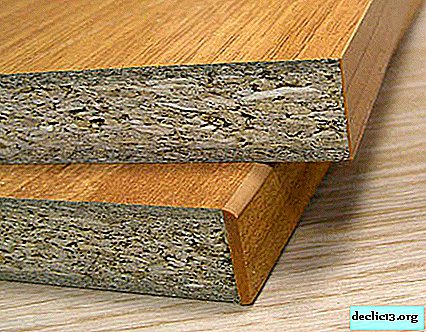Rock Garden Landscaping
On the stones of his garden
Grow sakura
Loving her soul
Answering Pink will become
Kobayashi Issaoutstanding haiku master, japanese poetThe centuries-old cultural traditions of Japan have always attracted with its alluring mystery and grace of representatives of other nations. There are more and more people who want to recreate the atmosphere of Japanese life in their homes and household plots. Stone is the main element in the design of parks and gardens in Japan. One of the most common ways of landscape design is rock garden.
A traditional rock garden is a flat area, covered with sand or small pebbles. The main element of this site is chaotically located uncouth stones. In fact, chaos is only apparent: the composition of the stones is subject to the strict rules of the philosophy of Zen Buddhism - one of the Japanese religions. The entire installation consists of separate groups containing three stones, the total number of stones is 15. The classic arrangement of the Japanese garden is that no matter where the visitor is, only 14 stones will always be visible to him. At present, a site decorated with stones can very conditionally and remotely resemble a real rock garden, in which case it is important not to upset the harmony of unity of the exterior and interior of the house:
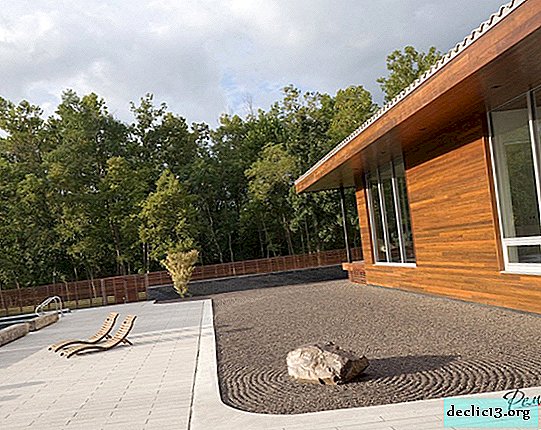
Even one unprocessed stone can be used as a half-hint at a full-fledged rock garden to decorate the exterior in a Japanese style:

According to the Japanese tradition, on the surface of sand or pebbles of the garden, special grooves surrounding the stones are made with a rake. Small pebbles symbolize water, large pebbles symbolize land, and furrows symbolize waves. For example, an ocean with islands:

In modern landscape design, the rock garden is very popular, although ancient Japanese traditions are not followed with historical accuracy. However, this design style has certain rules: all stones must be of different sizes and are located asymmetrically:

You can emphasize the integrity of the design idea of a landscape in the style of a Japanese garden in the most creative ways. For example, lay out a rectangular platform with rubble, and on it with flat stones of the same type make up a character:

Stone installations on a landscape site
Initially, the function of the stone garden was the ability to meditate, moving away from worldly vanity and everyday problems, and the composition of the stones should be composed in such a way as to facilitate this. You can combine several elements in one installation: a stone lamp, pouring water into a stone barrel, a paper flashlight:

If the area and natural conditions of the land allow, then plant compositions can be combined with stone ones. Groups of unprocessed cobblestones underline the grace of a curly flowerbed with a small green lawn and a flowering bush of lilies:

Unpolished boulders of various configurations organically fit into the design of the site with bonsai dwarf trees. From a stone slab you can build an improvised bench, where it will be convenient to admire nature, reflect in solitude:

The site, which is based on the use of green spaces, can be supplemented with original stone structures or pebbled out part of the site, creating a wavy edge resembling a river bank:

Japanese style rock gardens
On the basis of stone compositions it is very convenient to create rock gardens, thus combining eastern and western cultures. This will allow a piece of wildlife to organically fit into the artificial landscape. An eclectic combination of stone slabs of strict geometric shapes with stones in their original form and with bushes planted in the manner of artistic mess will create a feeling of natural naturalness:

A small alpine hill can be located on a sandy or pebble area. So that the composition of the rock garden does not violate the rigor of the Japanese style, you can use a decorative well with vertical decorations and plants as landscape elements:

Dry creek in the rock garden
Perfectly combined in landscaping, a rock garden and dry ponds. You can use decorative gutters for the unusual design of a dry stream, fill them with polished stones painted in pastel colors. This decoration will complement the composition of stones of the same color, but larger sizes, located next to a dry reservoir:

A stream, calmly carrying its waters in your area, can be decorated with a large stone resembling a rocky reef. Such an element will always attract attention to the unusual design of the landscape:

Great attention was paid to garden paths in Japanese gardens: you need to follow them to the tea house for the tea ceremony, and this path should not be simple and easy. Therefore, flat stones are laid out so that a step-by-step path is obtained: stones must be placed at a distance of 10-15 cm from each other. Similar paths can be built along the entire length of a dry stream:

Decoration in the rock garden
Japanese-style garden or parkland is inconceivable without sculptural or architectural decorations. The most common of them are fixtures of various configurations: low or high, with a wide cover or in the form of a house with a pointed roof. Such stone lanterns create harmony with all other elements of the rock garden:


In addition to lamps, figurines of mythological deities are often installed in the Japanese garden. Hotei - the god of fun, wealth and happiness - according to the tradition of the Japanese, takes away the problems and failures of his masters. The sculpture of Hotei, sitting among the stones, will combine all the elements of the garden:

The installation of the Buddha statue in the garden should be approached with great care, as for the religion of Japan, this is a religious building that must be worshiped. If you still decided to put on a sculpture depicting the Buddha, then you need to study and understand the essence of this image. The sculpture must be installed on a dais, before it is necessary to equip a place for offerings, albeit symbolic, it must be visible from different parts of the garden:

The black color in the culture of the land of the rising sun symbolizes joy, so the black miniature rocks in the center of the composition of the Japanese garden are a symbol of the triumph of life.

The rock garden should be in harmony with the entire plot, facade and interior of the house. Even from a window, contemplation of a beautiful landscape should evoke positive emotions and contribute to philosophical reflection.




